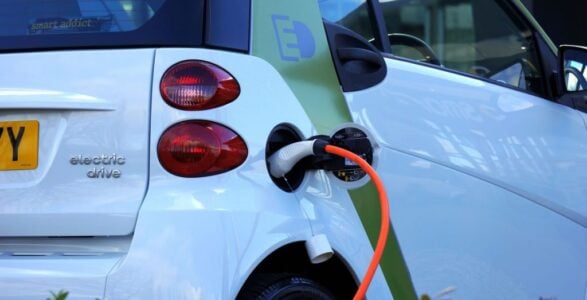Guide to HEVs: Hybrid Electric Vehicles

Published 22 June 2022
What is an HEV?
A hybrid electric vehicle (commonly referred to as HEV or simply hybrid) is a vehicle that relies on two different power sources for motion.
Diesel and electricity hybrids are more common in Europe, whereas petrol and electricity hybrids are more usual in the USA.
How does an HEV work?
Hybrids have both a normal size fuel tank and a small battery.
The goal of a hybrid is to use the electric portion of the drivetrain as much as possible without compromising performance. Harmful emissions are reduced and the fuel efficiency of the car increases. This is because the electric motor is more efficient than a combustion engine and produces no emissions.
How are hybrids charged?
Unless it’s specified to be a PHEV, hybrids cannot be plugged into an electric source for charging. The battery can be charged in the following ways (depending on the type of HEV):
- through regenerative braking – where the kinetic energy of the vehicle is converted into battery energy when slowing down. Without such a system this kinetic energy would be lost – mainly in the form of heat as the brake pads of the car heat up due to friction of the brake pad on the brake disc.
- by burning petrol or diesel inside its combustion engine to generate electricity to charge the battery
- for plug-in hybrids only the battery is charged via a cable attached to the car and mains electricity.
What are the different types of hybrids?
There are 3 types of hybrid electric vehicle:
Full Hybrid – FHEV
FHEVs can run on just the combustion engine (series mode), the electric engine (all-electric mode), or a combination, (parallel mode) and are the most fuel efficient hybrid. A full hybrid is not plugged in to recharge; the battery is recharged by running the combustion engine.
e.g. Toyota Prius
Mild Hybrid – MHEV
MHEVs always use the electric motor and combustion engine together, known as parallel mode. The electric motor is not powerful enough to drive the wheels at any real speed without the assistance of the combustion engine. Mild hybrids cannot run in just electric or just combustion engine mode. Mild hybrids typically have stop-start and regenerative braking, but are not capable of the MPG figures of a FHEV.
e.g. Peugeot 308 e-HDi
Plug-in Hybrid- PHEV
Typically, plug-in hybrids use all the technology of a FHEV but have a larger capacity battery which can be plugged into the mains to charge . The range they can drive in all-electric mode is higher than the average FHEV – depending on the model between 30 and 50 miles.
e.g. Audi A2 E-Tron
What is the Difference Between Hybrid and Electric Cars?
The main difference between a standard hybrid and an electric car is that a hybrid car derives some of its power from a non-electric power source, like petrol, whereas electric vehicles derive all their power from batteries..
Driving Range of HEVs
There are no battery range issues as you mainly use petrol or diesel to power the car. The car’s range is largely governed by the size of the fuel tank and how efficient the car’s engine is.
Driving around town below about 20 mph, you can drive on battery power alone using the electric motor. Full and mild hybrids will give you about 1-2 miles before the battery runs out of charge. PHEVs offer more range of around 30mph on a single charge.
Back to all help and advice articles



